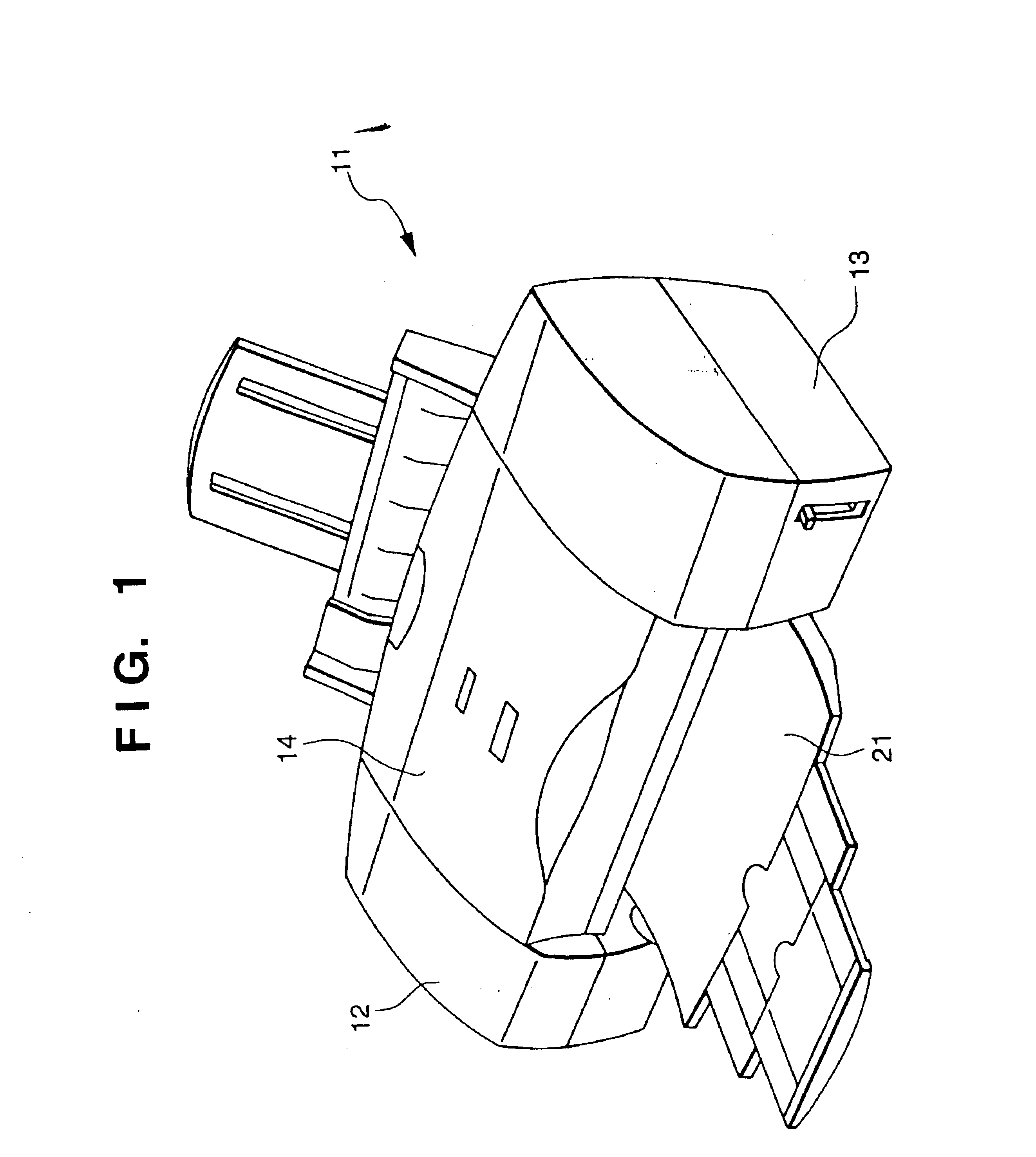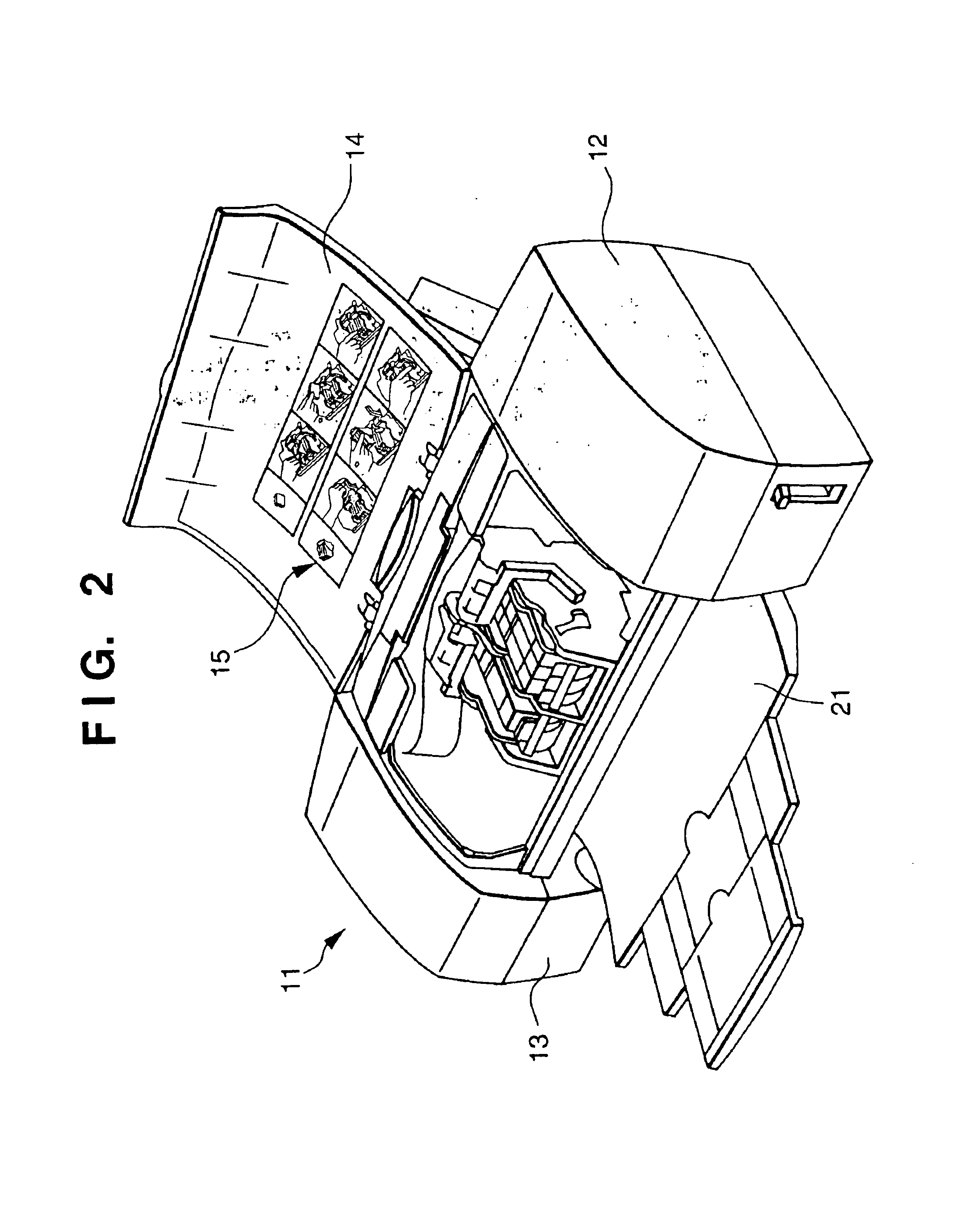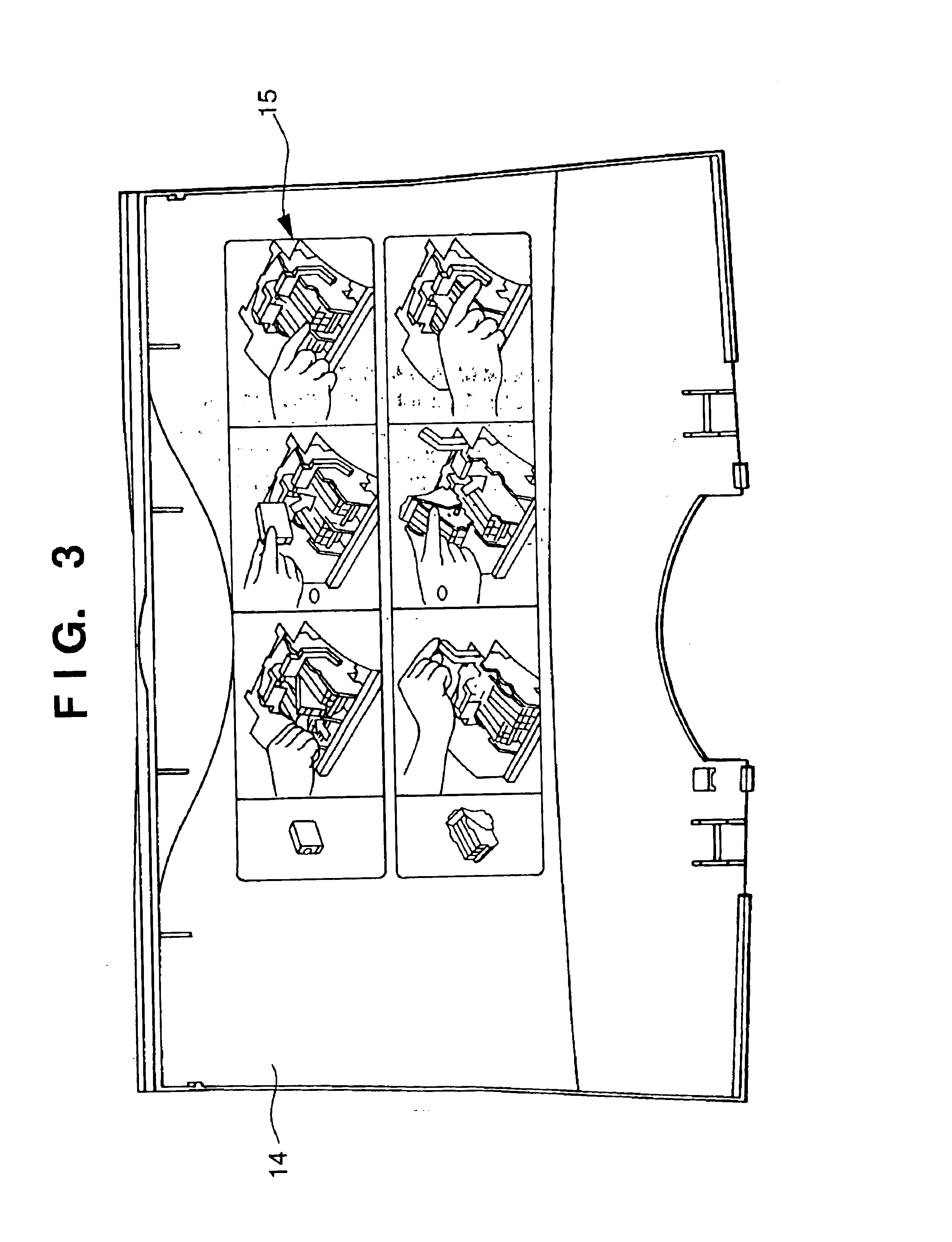Recycled plastic material, electronic apparatus having the recycled plastic material, method of manufacturing plastic part, method of manufacturing the recycled plastic material, and method of reusing plastic material
- Summary
- Abstract
- Description
- Claims
- Application Information
AI Technical Summary
Benefits of technology
Problems solved by technology
Method used
Image
Examples
example 1
About 40 kg of a raw material were manufactured by laser-engraving an illustration 20 of operation instructions as shown in FIG. 7 on an operation cover 19 (material: ABS resin, average thickness 2.5 mm, true density 1.05) of an inkjet printer (BJC-430J: manufactured by CANNON INC.) as shown in FIG. 6. This ABS resin does not contain any filler or reinforcer for imparting characteristics such as strength, slidability, and flame retardency. A different material such as a name plate is not adhered to the ABS resin, either.
A laser engraving machine used in this embodiment is SMU65DT10DK (manufactured by BAASEL LASERTECH, Germany). It has a Nd:YAG laser as a laser source, a wavelength of 1.064 μm, an output of 65 W, a turntable diameter of 1,000 mm, and a lens focal length of 254 mm. This laser engraving machine also includes two engraving heads whose maximum engraving region diameter is 230 mm. It also includes an exhaust pump with filter in order to remove fume generated during laser ...
example 2
2,000 used cartridges 31 (BC-02: available from CANNON INC.) shown in FIGS. 8 and 9 were collected. As shown in FIG. 10, a cover plate 43, a printing head 32, a printed circuit board, and a base plate 37 were removed from an ink tank 33, and the ink tank 33 was cut from a cut line L indicated by the alternate long and two short dashed line. As shown in FIG. 11, an ink holding member 44 accommodated in the ink tank 33 was extracted. Consequently, about 30 kg of external members (material: PS-modified PPE, true density 1.08) of the ink tanks 33 were obtained as a recycling raw material. All of these plastic parts were manufactured by the same lot. The physical property values in the virgin pellet state before use were an Izod impact test value (based on ASTM-D256: sample size 2.5×0.5×0.25 (inch), with mold notch) of 90.2 J / m, and an MFR (based on ASTM-D1238: 250° C., load 98.07N) of 44 g / 10 min. The measured physical property values are indicated by R2 in FIG. 14.
Note that the color d...
example 3
Cleaning, cleaning solution removal, drying, and precision separation were performed following the same procedures as in the Example 2 except that a 6-mm mesh screen was used in pulverization and the plastic supply rate and the cleaning solution flow rate were set to 8 kg / min. and 80 liters / min., respectively, during cleaning. As a consequence, the cleaned pulverized material obtained weighed 27 kg.
The physical property values of this cleaned pulverized material were an Izod impact test value of 87.2 J / m, an MFR of 43 g / 10 min., and a color difference ΔE of 0.49. These measured physical property values plus the residual moisture and the like are indicated by S3 in FIG. 14.
As shown in FIG. 14, from R2 to S3, the Izod impact value decreased 3.3%, and the MFR increased 2.2%. As described previously, to give a recycled plastic material a performance equivalent to that of a virgin material, it is necessary to make the Izod impact strength 0.8 times or less and the MFR less than 1.2 times...
PUM
| Property | Measurement | Unit |
|---|---|---|
| Length | aaaaa | aaaaa |
| Fraction | aaaaa | aaaaa |
| Magnetic field | aaaaa | aaaaa |
Abstract
Description
Claims
Application Information
 Login to View More
Login to View More - Generate Ideas
- Intellectual Property
- Life Sciences
- Materials
- Tech Scout
- Unparalleled Data Quality
- Higher Quality Content
- 60% Fewer Hallucinations
Browse by: Latest US Patents, China's latest patents, Technical Efficacy Thesaurus, Application Domain, Technology Topic, Popular Technical Reports.
© 2025 PatSnap. All rights reserved.Legal|Privacy policy|Modern Slavery Act Transparency Statement|Sitemap|About US| Contact US: help@patsnap.com



